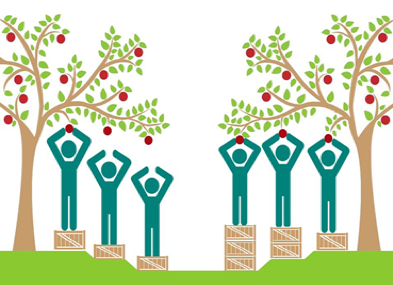
Hi, I’m Heidi Schaeffer, chair of the global Outcome Mapping Learning Community and mentee of Ricardo Wilson-Grau, author of Outcome Harvesting: Principles, Steps and Evaluation Applications. My consulting focuses on multi-partner strategy, monitoring and evaluation for community health and wellbeing. I use an equity-informed Outcome Harvesting approach to monitor health equity with healthcare organizations that privileges the participation and inclusion of equity-seeking groups. The primary users and uses of this type of equity-informed Outcome Harvesting approach include people and groups, usually living in proximity, that are experiencing systemic discrimination, stereotyping and bias in the healthcare system.

Hot Tip: In order to learn what outcomes are being achieved in a large healthcare organization you can useOutcome Harvesting to monitor who is changing, and in what ways the changes demonstrate significant patterns of progress towards inclusive and culturally safe healthcare experiences for equity-seeking groups.
Considerable work is going into reducing health disparities and advancing organization-wide strategies and tools aimed at eliminating all forms of discrimination and oppression. However, healthcare organizations will not be able to see their way out of a system that is blinded by historical discrimination and invisible dominant perspectives. The changes that are needed to build more inclusive and culturally safe healthcare organizations must be informed by ongoing connections with people and groups with differing experiences of privilege, inclusion and discrimination.
Hot Tip: The principle of “nurturing appropriate participation” in the implementation of Outcome Harvesting can be based on inclusive leadership practices that support anti-racist, culturally safe and accessible participation.
Hot Tip: To advance equity and inclusion, the OH principle of “harvesting social change outcomes” needs to focus the monitoring or evaluation questions on outcomes that describe shifts in power relationships and allyship practices.
Rad Resource: Indigenous Allyship toolkit: https://gallery.mailchimp.com/86d28ccd43d4be0cfc11c71a1/files/102bf040-e221-4953-a9ef-9f0c5efc3458/Ally_email.pdf
Many changes in the organizational culture may appear as small actions, such as a rainbow sign in the waiting room declaring a safe space for LGBT people, a gender-free symbol on the washroom door and including an Indigenous land acknowledgement before each staff meeting. These changes may be difficult to recognize as outcomes.
Hot Tip: The OH principle of “formulating outcomes as an observable change”, when carried out with equity-seeking groups, can help healthcare organizations document, appreciate and advance less visible outcomes.
In the paper, “The Waters of System Change” the authors, John Kania, Mark Kramer and Peter Senge, state, “Real and equitable progress requires exceptional attention to the detailed and often mundane work of noticing what is invisible to many”
Lesson Learned: Equity-informed Outcome Harvesting steps and principles make hard to see organizational outcomes more visible and is a promising approach to evaluating health equity in healthcare systems.
Rad Resource: “Waters of System Change” https://www.fsg.org/publications/water_of_systems_change
Cool Trick: Ask for help. A generous community of Outcome Harvesting and Outcome Mapping practitioners answer questions and provide feedback at www.outcomeharvesting.net and www.outcomemapping.ca
The American Evaluation Association is celebrating Outcome Harvesting week. The contributions all this week to aea365 come from colleagues of the late Ricardo Wilson-Grau, originator of Outcome Harvesting, and these articles are written in his honor. Do you have questions, concerns, kudos, or content to extend this aea365 contribution? Please add them in the comments section for this post on the aea365 webpage so that we may enrich our community of practice. Would you like to submit an aea365 Tip? Please send a note of interest to aea365@eval.org. aea365 is sponsored by the American Evaluation Association and provides a Tip-a-Day by and for evaluators.


Hello Heidi! Good points – the first step to eliminating inequality is awareness so bringing to light the problems facing the healthcare system is just breaking the surface. Fortunately, there are ways to make a facility more inclusive with, like you suggested, signs noting that it is supportive of minorities. Evaluators do have to keep in mind about where a program stands in terms of inclusion to best serve their diverse pool of clients after all.
Hello Heidi. My name is Crystal and I am a student at Texas A&M central Texas. Getting others well informed about inequalities of certain groups especially in the healthcare system is a really great way to make sure those individuals are included. It is true that some healthcare organizations are unknowing about discrimination or oppression towards certain demographics of people. As an evaluator, identifying health care providers that do support minorities or people with gender inequalities, can share positive information and outcomes of how they are allies with these individuals. This information can be used to help sway or inform other providers and look at the positive outcomes. Surely this is best practice for all. I appreciate this post most insightful, thank you.